Rosyfinch Ramblings
Comments are not moderated here - please visit NEW SITE FOR ROSYFINCH.COM
07/18/10
As soon as we arrived back in Illinois after our two-week trip to three Western states , we were anxious to catch up with the local birds that, in our absence, had returned north to nest. Since we missed seeing any Henslow’s Sparrows or Bobolinks before departing, we headed back to nearby Dick Young/Nelson Lake Forest Preserve in Batavia.
Recent rains had fed the creek at the west end of Nelson Lake:
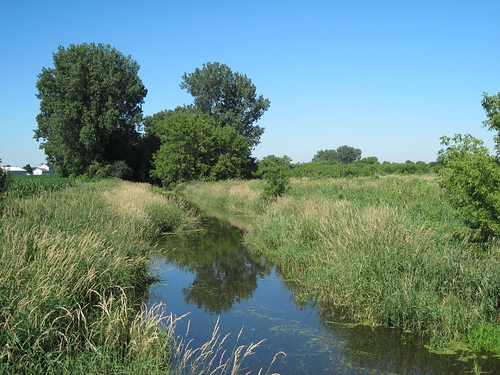
After parking at the north entrance of the Preserve, we walked the path that leads into an extensive area of restored tallgrass prairie. Blackbirds were chasing an American Kestrel that was carrying prey.
The kestrel landed on the roof of the north picnic shelter. Through our binoculars, we could not tell whether the kestrel had caught a bird or a small mammal. After viewing the photo on the computer screen, we could identify the prey item as a rodent, probably a vole:
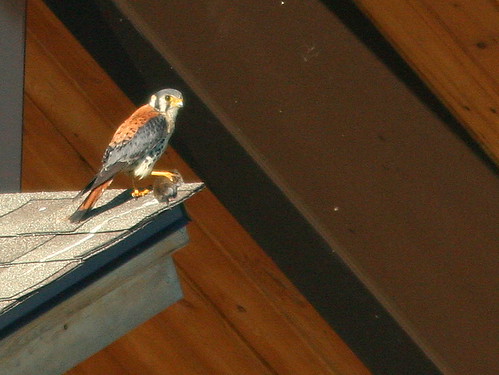
As we walked the two mile loop through the prairie, We were greeted by the songs of meadowlarks, Song and Savannah Sparrows and Red-winged Blackbirds.
From a low bush we heard the “witchity-witchity” serenade of a Common Yellowthroat:
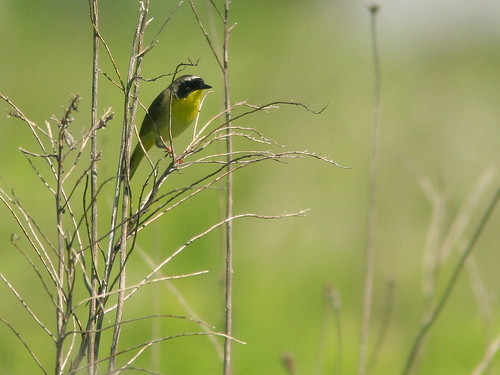
Another flash of yellow in the prairie– an American Goldfinch:

Male Dicksissels, guarding their nesting territories, sang “DIK DIK, chi-chi-chi:”
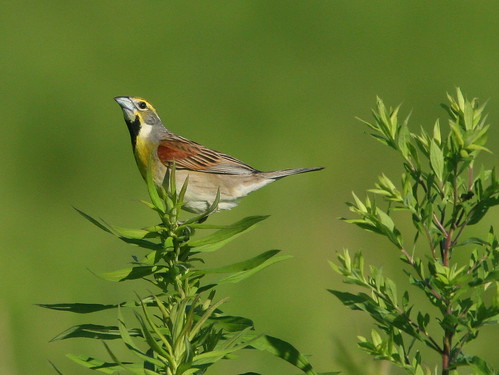
The Sedge Wrens were now busy feeding their nestlings. Their songs were less frequent than when we last saw them a couple of weeks before.
One wren scolded us as we passed by:

At last, we saw a Henslow’s Sparrow, a species that we missed seeing before we left on our trip.
The Henslow’s Sparrow sings a weak little “chil-ipp,” but with energy befitting a virtuoso:

This Henslow’s Sparrow approached us unusually close, probably because it had a nest near the path:
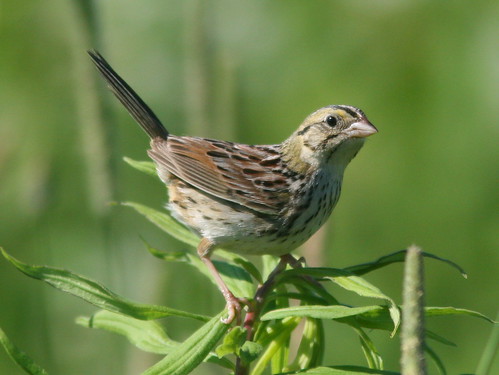
At the far end of the loop, we finally saw our second target species, this male Bobolink:
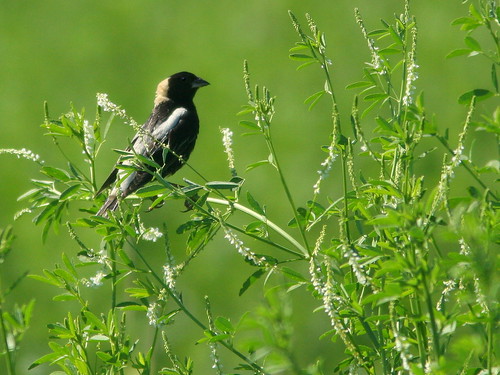
The female Bobolink bears little resemblance to her mate:

Beauty in an unlikely place– a Pearl Crescent butterfly extracts essential nutrients from a deposit of raccoon dung:
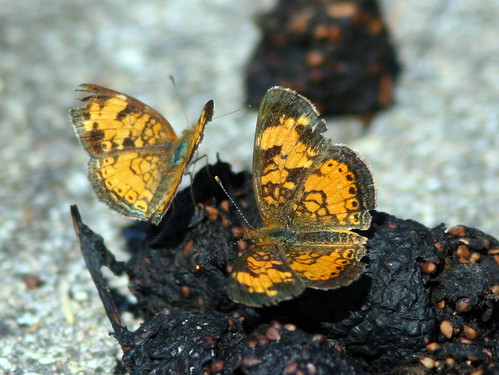
Later, we checked on the progress of the two Bald Eagle chicks in the nest near our daughter’s home in Batavia. Only about two miles from our condo, this is the first recorded eagle nest in Kane County since DDT was banned in the early 1970s. Coincidentally, we have also been monitoring the first post-DDT nest in Broward County, about two miles away from our Florida home.
The eaglets, about 11 weeks old, are ready for free flight, but they will return to the nest to be foed for another 6 to 8 weeks:
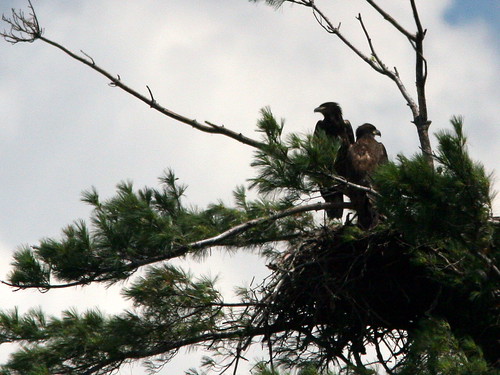
Across the highway from the eagle nest, in Hawk’s Bluff Park, this Eastern Wood-Pewee is bringing an insect to nestlings:
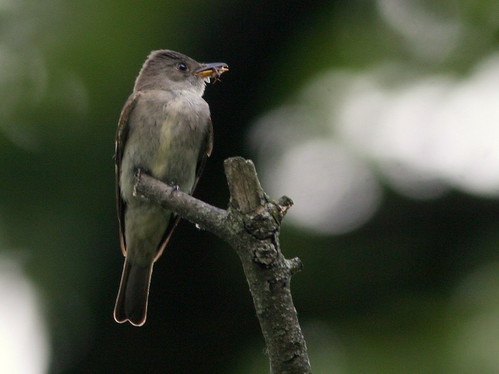
Numerous Indigo Buntings sing loudly:
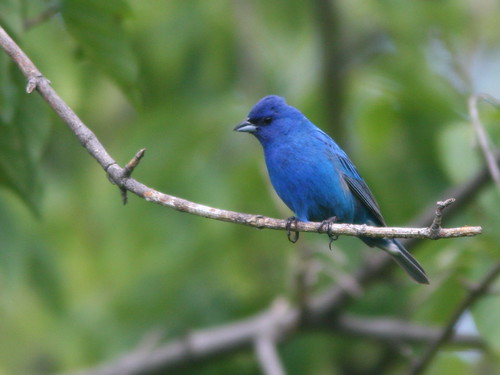
Another bit of scat from an unknown carnivore attracts this Summer Azure:

A female Common Whitetail dragonfly rests on the wood chips of the path:

Before departing for Florida, we made two trips to the Aurora West Forest Preserve, hoping to find the Clay-colored Sparrows that had been reported there while we were back in California. We spent a couple of hours searching for the sparrows without success. We did see a Yellow-breasted Chat, but it was too far away for me to obtain a decent photo. We did see a small flycatcher that had distinct wing bars but no visible eye rings. This narrowed the identification down to either an Eastern Wood-Pewee or one of the two small “Traill’s” flycatchers, the Alder or Willow Flycatchers. These are distinguishable only by voice and are found in slightly differing habitats. Our bird did not have streaked undertail coverts as does the the wood-pewee, and it occupied a dry brushy area in the open prairie. Since it did not sing or call, our educated guess is that it was not an Alder Flycatcher, which favors a stream-side habitat.
This is probably a Willow Flycatcher:

Finally, we thought we had seen and photographed a possible Clay-colored Sparrow. We had only fleeting glimpses, so our identification was tentative.
Upon reviewing the photos, it looked rather nondescript and young, and lacked the plumage characteristics of a Clay-colored Sparrow:
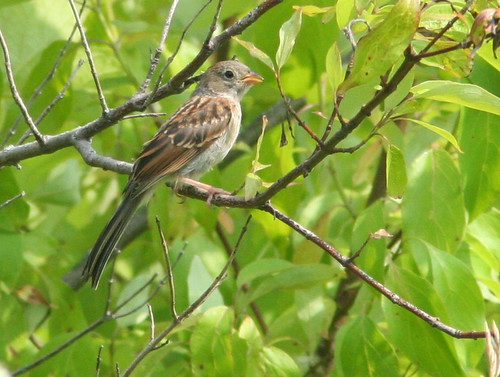
Another photo showed that it was perching near an adult Field Sparrow, so this clinched our impression that is was a young Field Sparrow, not a Clay-colored after all:
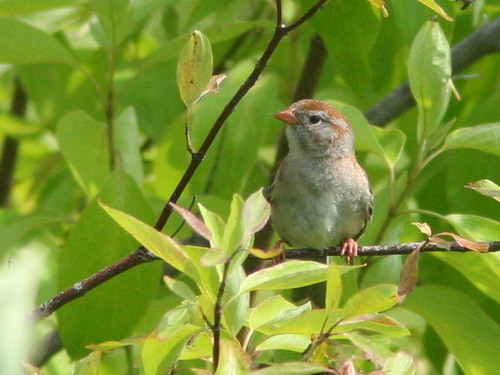
This Red-eyed Vireo sang as it hunted for caterpillars:

































